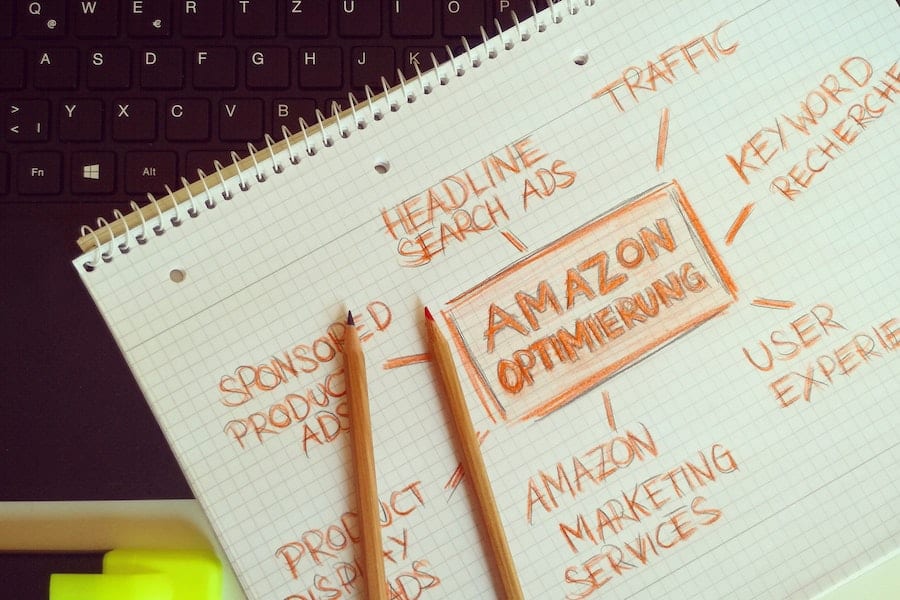Shipping to Amazon FBA (Fulfillment by Amazon) is a crucial process for online sellers seeking to expand their reach and enhance customer service. Understanding the intricacies of this shipping method is essential for a seamless and successful selling experience. In this comprehensive guide, we will walk you through the step-by-step process of shipping to Amazon FBA. From preparing your inventory and creating a Seller Central account to labeling your products and managing your FBA inventory, we’ll cover everything you need to know to streamline your shipping operations and boost your business on Amazon.
How To Ship To Amazon Fba?
Shipping to Amazon FBA can be done through various methods. Here are seven ways to ship your products to Amazon’s fulfillment centers:
- Small Parcel Delivery: This is the most common shipping method for individual products or smaller quantities. Sellers use shipping carriers like UPS, FedEx, or DHL to send their products to Amazon in standard-sized or oversized boxes.
- Less Than Truckload (LTL) Freight: For larger shipments that don’t require a full truckload, LTL freight is a cost-effective option. This method is suitable when shipping a significant quantity of products, but not enough to fill an entire truck.
- Full Truckload (FTL) Shipping: If you have a substantial number of products to ship, FTL is a viable option. It involves filling an entire truck with your inventory, making it more suitable for high-volume sellers.
- Partnered Carrier Program: Amazon has partnered with select carriers to offer discounted shipping rates to FBA sellers. Using these partnered carriers can help you save on shipping costs.
- Amazon Global Logistics (AGL): For international sellers, AGL provides an end-to-end logistics solution, making it easier to ship products from other countries to Amazon’s fulfillment centers worldwide.
- Amazon’s Inbound Shipping Service: Amazon offers its own inbound shipping service called “Amazon Partnered Carrier Shipping.” With this option, sellers can create shipments directly within Seller Central and let Amazon handle the logistics.
- Third-Party Freight Forwarders: Some sellers may prefer to work with third-party freight forwarders to manage the shipping process. These companies specialize in coordinating international shipments and handling customs clearance.
Preparing Your Inventory For Shipping
Preparing your inventory for shipping to Amazon FBA is a critical step in ensuring a smooth and efficient selling process. By following these guidelines, you can minimize potential issues and provide a positive experience for your customers.
Before sending your products to Amazon’s fulfillment centers, conduct thorough research to identify viable items that align with market demand. Ensure that your products meet Amazon’s FBA requirements, including size and weight limits, product category restrictions, and compliance with safety standards. Non-compliance can lead to delays or even the removal of your products from FBA.
Proper packaging is crucial to safeguard your products during transit. Choose durable and appropriate packaging materials that can withstand handling and potential hazards in the shipping process. Use bubble wrap, air pillows, or packing peanuts to provide cushioning and prevent damage. Reinforce boxes with packing tape to avoid any accidental openings.
Amazon requires proper labeling of your products to identify and track them in their fulfillment centers accurately. Follow Amazon’s guidelines for labeling and barcoding each item. This includes applying FNSKU (Fulfillment Network Stock Keeping Unit) labels or using UPC/EAN barcodes, depending on whether your products are new or existing listings.
Keep meticulous records of your inventory to avoid stockouts or overselling. Utilize Seller Central’s inventory management tools to monitor stock levels and set up restock alerts. Regularly update your inventory quantities to ensure accurate availability information for customers and avoid potential issues with Amazon’s inventory performance metrics.
Amazon’s Labeling Requirements For Fba Shipments
Amazon has specific labeling requirements for FBA shipments to ensure efficient processing and accurate inventory management. Here are the key labeling guidelines you need to follow:
- FNSKU Labels: Each individual product being sent to Amazon’s fulfillment centers must be labeled with an FNSKU (Fulfillment Network Stock Keeping Unit) label. The FNSKU uniquely identifies your product within Amazon’s system. You can print these labels directly from your Seller Central account.
- Removal of Existing Barcodes: If your products already have retail barcodes (UPC, EAN, etc.), you must cover or remove them before applying the FNSKU label. This prevents any confusion during the fulfillment process.
- Label Placement: Place the FNSKU label on the product’s packaging in a visible and easily scannable location. Avoid covering important product information or graphics with the label. For poly bags, the label should be placed on the exterior.
- Case-Packed Products: If you are sending multiple identical products in a single shipping box, you must use a UPC or EAN barcode on the outside of the box, along with the number of units inside (case-packed quantity). Inside the box, individual products should have FNSKU labels.
- Prep and Labeling Requirements: Amazon has specific prep and labeling requirements for certain product categories, such as liquids, fragile items, and expiration-dated products. Ensure you follow these guidelines to prevent any issues during the receiving process.
Handling Amazon’s Receiving And Inspection
Handling Amazon’s receiving and inspection process is crucial to ensure that your products are accepted into the FBA inventory without any issues. Amazon has strict quality control measures to maintain a high standard of customer experience. Here’s how to navigate the receiving and inspection process effectively:
- Shipment Tracking: Monitor the progress of your shipment using Amazon’s shipment tracking feature or the carrier’s tracking service. This allows you to stay informed about the status of your shipment and anticipate its arrival at the fulfillment center.
- Receiving Notification: Once your shipment arrives at the Amazon fulfillment center, you will receive a notification in your Seller Central account. This notification will inform you that your products are ready to be checked in and processed.
- Inspection and Check-In: Amazon’s fulfillment center staff will inspect your shipment to ensure it complies with their receiving requirements. This includes verifying the quantity, product condition, and packaging. Any discrepancies or issues discovered during this process will be reported in your Seller Central account.
- Inventory Placement: After inspection, Amazon will place your inventory into their warehouse. This process involves storing your products in the appropriate location within the fulfillment center, making them ready for fulfillment when a customer places an order.
- Inventory Performance Dashboard: Regularly monitor your Inventory Performance Dashboard in Seller Central to stay updated on the status of your inventory. This dashboard provides insights into your inventory health, including any issues related to receiving and fulfillment.
The Importance Of Shipping To Amazon Fba Correctly And Efficiently
Shipping to Amazon FBA correctly and efficiently is of utmost importance for several compelling reasons:
- Improved Customer Experience: Fast and reliable shipping is essential for meeting customer expectations. By leveraging Amazon’s efficient fulfillment network, you can offer faster delivery times, leading to higher customer satisfaction and positive reviews.
- Prime Eligibility: Products fulfilled by Amazon are eligible for Amazon Prime, which is a highly sought-after status for online shoppers. Prime members value the benefits of fast, free shipping, and are more likely to purchase products that offer this perk.
- Amazon’s Buy Box Advantage: Products fulfilled by Amazon are more likely to win the Buy Box, the prominent “Add to Cart” button on product pages. Winning the Buy Box increases visibility and drives more sales, giving your products a competitive edge.
- Expanded Customer Reach: Amazon’s vast customer base and global reach can expose your products to millions of potential buyers. Efficient shipping to FBA enables you to tap into international markets, reaching customers you might not have accessed otherwise.
- Time and Cost Savings: Leveraging Amazon’s fulfillment centers allows you to offload the complexities of warehousing, order processing, and shipping. This frees up time and resources, enabling you to focus on product development, marketing, and growing your business.
- Reduced Shipping Errors: Amazon’s receiving and inspection process ensures that your products meet quality standards before being made available for sale. By shipping correctly, you minimize the risk of shipping errors, which can result in customer complaints and returns.
- Access to Multi-Channel Fulfillment: Amazon’s Multi-Channel Fulfillment (MCF) service allows you to use FBA to fulfill orders from other sales channels like your website or other marketplaces. This streamlines your fulfillment process and provides a consistent customer experience across platforms.
Conclusion
In conclusion, shipping to Amazon FBA correctly and efficiently is a crucial aspect of a successful selling journey on the platform. By adhering to Amazon’s guidelines and leveraging their fulfillment network, sellers can enhance customer satisfaction, access Prime benefits, and expand their reach to a global audience. With streamlined shipping processes and improved seller metrics, FBA sellers can enjoy increased sales and a competitive edge in the marketplace. Embracing the advantages of FBA empowers sellers to focus on growth strategies, ultimately leading to a thriving and profitable business on Amazon.
FAQ’s
What Is Amazon Fba, And How Does It Work?
Amazon FBA (Fulfillment by Amazon) is a service that allows sellers to store their products in Amazon’s fulfillment centers. When a customer places an order, Amazon picks, packs, and ships the products on behalf of the seller. Additionally, Amazon handles customer service, and returns, and provides fast shipping options like Amazon Prime.
How Do I Create An Amazon Fba Shipment?
To create an FBA shipment, log in to your Seller Central account, go to “Inventory,” and select “Manage FBA Shipments.” Follow the step-by-step process to prepare your shipment, print shipping labels, and arrange for carrier pickup or drop-off at an Amazon fulfillment center.
What Are The Benefits Of Using Amazon Fba?
Using Amazon FBA offers numerous benefits, such as access to Prime customers, improved shipping speeds, customer service support, and the ability to win the Buy Box. FBA also reduces the seller’s burden of order fulfillment, allowing them to focus on other aspects of their business.
How Are Fba Fees Calculated?
FBA fees consist of two main components: fulfillment fees and storage fees. The fulfillment fee is based on the size and weight of the product and includes picking, packing, and shipping. Storage fees depend on the volume of space your inventory occupies in Amazon’s fulfillment centers and vary based on the time of year and the type of product.
Can I Use Fba For International Shipping?
Yes, Amazon FBA allows sellers to use their fulfillment centers to ship products internationally. Sellers can use FBA Export to offer international shipping to customers in eligible countries, or they can utilize Amazon Global Logistics to ship inventory from other countries to Amazon’s fulfillment centers worldwide.








